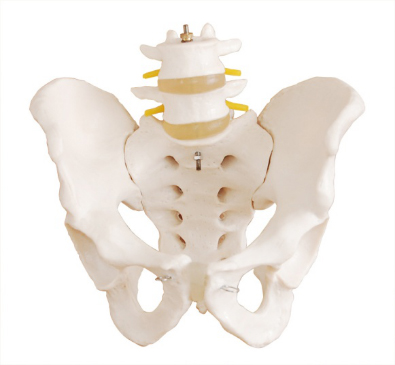Welcome to visitShanghai Chinon medical Model & Equipment Manufacturing Co., LTD
The pelvis, as an important part of the human skeleton, not only carries the heavy responsibility of supporting the body and protecting the internal organs, but also experiences a long and wonderful growth process from fetus to adult. The pelvis model, as an important tool in medical education and clinical practice, provides us with an intuitive window into the growth trajectory of the pelvis.

First, let's review the fetal pelvis. In the early stages of fetal development, the pelvis is made up mainly of cartilage and connective tissue, which gradually ossify as the fetus grows, forming a hard bone structure. The pelvis model can clearly show this process, allowing us to understand the developmental characteristics and changes of the fetal pelvis.
After entering infancy, the structure and function of the pelvis are gradually improved. The baby's pelvis is relatively soft and has good plasticity, which helps the baby pass through the narrow birth canal at birth. The pelvis model can simulate this process and allow us to better understand the physiological characteristics of the baby's pelvis.
With the increase of age, the pelvis gradually matures and ADAPTS to the needs of various activities of the human body. During adolescence, due to the action of sex hormones, the pelvis will undergo significant changes, such as the enlargement and shape of the pelvis, to adapt to the development and maturity of the reproductive system. The pelvis model can show these changes and give us a more intuitive understanding of the developmental characteristics of the pelvis during adolescence.
By adulthood, the structure and function of the pelvis are relatively stable. It must not only support the weight of the body, but also protect the internal organs, especially the reproductive organs. The pelvis model can simulate the effects of various daily activities and exercises on the pelvis and help us understand how to protect the health of the pelvis.
Finally, with age, degenerative changes can also occur in the pelvis. The pelvis of the elderly may have osteoporosis, fracture and other problems, affecting the quality of life. The pelvis model can simulate these pathological changes, so that we can better understand the health problems of the elderly and take corresponding preventive measures.
In summary, the pelvis model provides us with a platform to visualize the growth trajectory of the pelvis from fetus to adult. By observing and manipulating the model, we can gain a deeper understanding of the physiological characteristics of the pelvis, the development process, and the problems it may face at different ages. This not only helps us to better grasp medical knowledge, but also helps us to provide more accurate diagnosis and treatment for patients in clinical practice.
|
NEXTпјҡWhat are the materials for making baby scalp venipuncture models?
LASTпјҡPeritoneal dialysis model: a leader in healthy dialysis |
Return list |